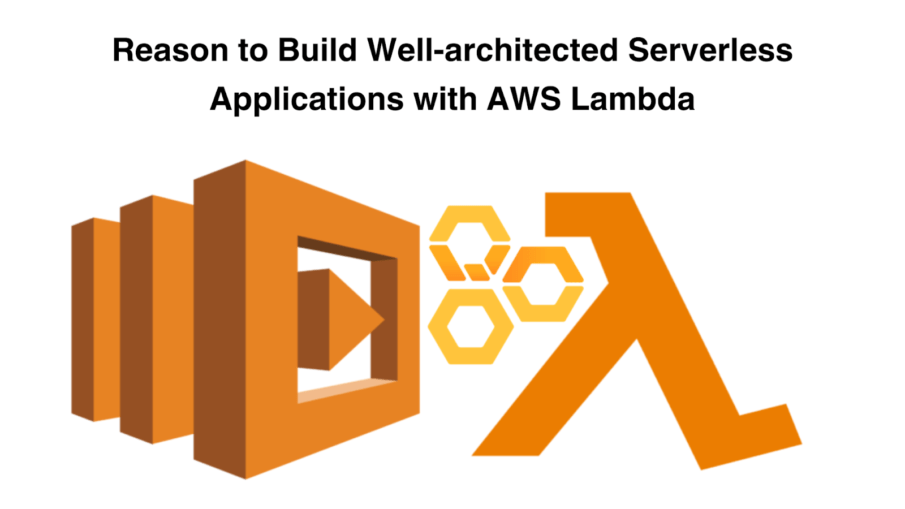Serverless architecture has become a game-changer in the fast changing world of cloud computing. AWS Lambda, a serverless computing solution offered by Amazon Web Services, is very well-liked by enterprises and developers. AWS Lambda offers a wide range of advantages for building well-architected serverless applications, from cost-effectiveness to scalability and ease of maintenance.
Every benefit of utilizing AWS Lambda’s capabilities for designing serverless systems that are effective, resilient, and scalable is highlighted, from cost savings to seamless scalability, from decreased operational overhead to event-driven agility.
AWS Lambda, a potent serverless computing technology provided by Amazon Web Services (AWS), is at the forefront of this revolution. Modern businesses and developers agree that using AWS Lambda to create well-architected serverless applications is a key approach. This blog post shares nine convincing reasons why this strategy is not only helpful but also important.
What is AWS Lambda, and Why choose it?
Developers can run code without setting up or managing servers by using AWS Lambda, a serverless compute service provided by AWS. It is a flexible and economical option for a range of applications.
Developers can upload their code to AWS Lambda and provide the event sources (such as HTTP requests, database updates, and file uploads) that cause the code to run, and Lambda will take care of the infrastructure, scaling, and resource management automatically.
Building well architected serverless applications with AWS Lambda has several strong benefits: First, it removes the requirement for server provisioning, patching, and scalability; it greatly lowers operational overhead and frees developers to concentrate only on developing code.
Second, because AWS Lambda uses a pay-as-you-go business model where you only pay for the compute time you actually use, it is an affordable option for varying workloads.
Third, Lambda interfaces easily with other AWS services, making it simple for developers to create event-driven, incredibly responsive, and scalable apps. AWS Lambda is a top option for contemporary cloud-native app development services due to its adaptability, affordability, and integration features.
Cost Optimization
With serverless computing, specifically with AWS Lambda, you only pay for the computational resources you really use. You must provide and manage servers in traditional server-based systems, which frequently results in over-provisioning and resource waste. With AWS Lambda, you can run code without paying idle fees because you are only charged for the requests and the time it takes to execute them. The cost reductions from this fine-grained pricing mechanism, particularly for systems with variable workloads, might be significant.
Scalability
The automatic scalability of AWS Lambda is intended to handle incoming demand. Lambda will make the appropriate computation resources available when the volume of incoming requests or events rises. By doing this, you can make sure that your application can deal automatically with traffic peaks. No matter how many customers your application serves—a few or millions—Lambda scales smoothly to provide great availability and responsiveness.
Reduced Operational Overhead
AWS Lambda’s serverless applications minimize many of the administrative responsibilities related to operating servers. Server provisioning, patching, or scaling settings are no longer a concern. Developers can concentrate on creating code and producing features more quickly since AWS Lambda takes care of the infrastructure. This decrease in operational overhead and results in shorter time-to-market and more effective development processes.
Also read – Cloud Native Application Development Guide
Built-in High Availability
High availability is built into AWS Lambda right out of the box. AWS regions’ Availability Zones automatically spread your functions among them, lowering the possibility of downtime brought on by hardware failures or other problems. In order to maintain the security and availability of
AWS also handles the underlying infrastructure, including patching and security upgrades.
Integration with AWS Ecosystem
Amazon S3, Amazon DynamoDB, Amazon API Gateway, and many other AWS services are all smoothly integrated with AWS Lambda. With the help of this integration, you can create robust, event-driven architectures that adapt to changes in the environment or your data. Additionally, you can use HTTP requests, database updates, or file uploads to call Lambda functions. Through this close integration, you can take full advantage of the AWS ecosystem’s capabilities while making the creation of complicated applications simpler.
Event-Driven Architecture
When it comes to event-driven architectures, AWS Lambda is ideal. It can be smoothly linked with a number of AWS services, including AWS Step Functions, Amazon S3, Amazon DynamoDB, and Amazon SNS. As a result, you may create applications with increased flexibility and automation that react to data changes or initiate actions in response to certain events.
Security and Compliance
The strong security mechanisms and compliance certifications of AWS are beneficial for AWS Lambda. IAM (Identity and Access Management), encryption, and VPC integration are just a few of the tools and services that AWS offers to assist you in protecting your serverless applications. Without the difficulty of managing servers, a secure environment may be built and maintained.
Granular Monitoring and Debugging
Comprehensive monitoring and debugging tools are available with AWS Lambda. AWS CloudWatch allows you to monitor the performance of your application and create alarms for prompt problem-solving. AWS X-Ray also offers tracing and analysis capabilities for locating and resolving performance issues.
Global Reach
You can deploy AWS Lambda in various AWS regions, enabling you to position your application closer to your user base around the world. This lowers latency and enhances the user experience as a whole. For disaster recovery or data storage, it is simple to replicate and synchronize data across regions.
Conclusion
Using AWS Lambda to develop well-architected serverless applications has a number of benefits, including cost reduction, scalability, decreased operational overhead, high availability, and easy connection with other AWS services. By using this strategy, you can concentrate on providing value to your users while leaving AWS to handle the labor-intensive infrastructure maintenance tasks. Remember to adhere to AWS’s Well-Architected best practices as you begin your serverless journey to make sure your applications are reliable, effective, and economical. Serverless computing with AWS Lambda is not just a fad; it is a revolutionary approach to creating and deploying cloud-based applications.




